.
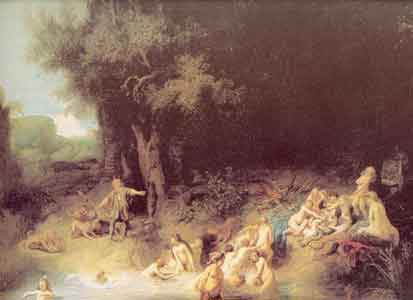
From Greek mythology, Callisto was the daughter of Lycaon, the king of Arcadia (or possibly a nymph). Her name is derived from kalliste, meaning "most beautiful."
The myth
A follower of Artemis, she took a vow to remain a virgin. But Zeus fell in love with her and disguised himself as Apollo in order to lure her into his embrace. Hera, Zeus' wife, then turned Callisto into a bear out of revenge. Later, Arcas, the son of Callisto and Zeus, nearly killed her in a hunt but Zeus placed them both in the sky as the constellations Ursa Major and Ursa Minor.
An alternate version: One of Artemis' companions, Callisto lost her virginity to Zeus, who had come disguised as Artemis. Enraged, Artemis changed her into a bear. Callisto's son, Arcas, nearly killed his mother while hunting, but Zeus or Artemis stopped him and placed them both in the sky as Ursa Major and Ursa Minor.
Another alternate version: Artemis killed Callisto in bear form, deliberately.
Hera was not pleased with the placement of Callisto and Arcas in the sky, so she asked her nurse, Tethys, to help. Tethys, a marine goddess, cursed the constellations to forever circle the sky and never drop below the horizon, hence explaining why they are circumpolar.
The Nymph Callisto, Jean-Baptiste Greuze
Origin of the myth
The myth may be derived from the fact that a set of constallations appear close together in the sky, in and near the Zodiac sign of Libra, namely Ursa Minor, Ursa Major, Boötes, and Virgo.
Boötes, since it resembles a male stick-figure, is in some versions of the myth explicitely identified as Arcas (untransformed), and was in myths elsewhere said represents a male god. Virgo, since it resembles a female, was usually considered to be a significant female goddess, though not identified as to whom.
The combination of a god and goddess and two bears in the same area of sky may have led to a transformation myth, associating the bears either as the god and goddess transformed, or as some thing they have cast out. The circumpolarity of the bears adding an extra detail to the myth.
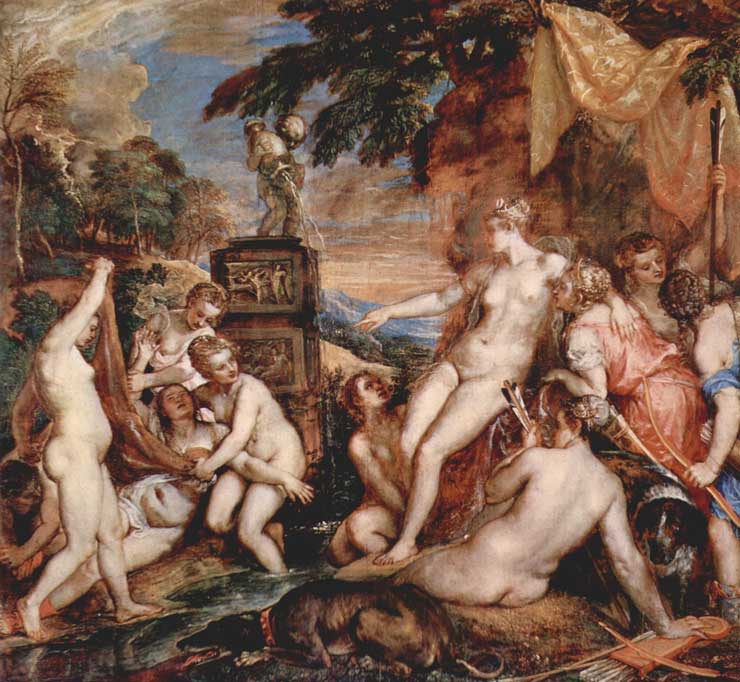
Diana and Callisto 1556-1559, Titian (c.1485-1576) . National Gallery of Scotland, Edinburgh, UK
Diana and Callisto, Titian
Diana and Callisto, Peter Paul Rubens
Diana and Callisto, Gaetano Gandolfi
Jupiter seducing Callisto, Andrea Schiavone
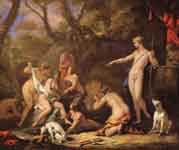
Diana and Callisto, Sebastiano Ricci
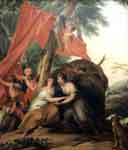
Jupiter as Diana and Callisto, Jacob de Wit (1695-1754)
Diana and Callisto , Palma Vecchio c. 1525
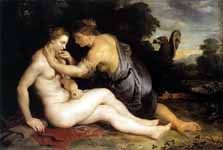
Jupiter and Callisto , Peter Paul Rubens
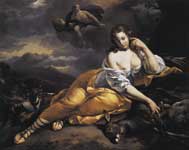
Jupiter Notices Callisto , Nicolaes Berchem 1656
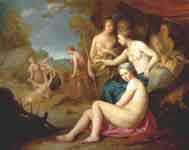
Diana en Callisto , Hendrick Bloemaert
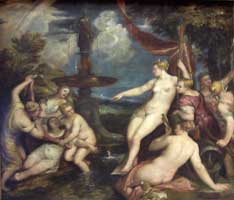
Other version: Diana and Callisto by Titian Kunsthistorisches Museum, Vienna
Links
- Richard Wilson's 'Landscape with Diana and Callisto' (http://www.liverpoolmuseums.org.uk/picture-of-month/displaypicture.asp?venue=7&id=130) at the Lady Lever Art Gallery (http://www.liverpoolmuseums.org.uk/ladylever/index.asp)
See also : Greek Mythology. Paintings, Drawings
| Ancient Greece
Science, Technology , Medicine , Warfare, , Biographies , Life , Cities/Places/Maps , Arts , Literature , Philosophy ,Olympics, Mythology , History , Images Medieval Greece / Byzantine Empire Science, Technology, Arts, , Warfare , Literature, Biographies, Icons, History Modern Greece Cities, Islands, Regions, Fauna/Flora ,Biographies , History , Warfare, Science/Technology, Literature, Music , Arts , Film/Actors , Sport , Fashion --- |
Retrieved from "http://en.wikipedia.org"
All text is available under the terms of the GNU Free Documentation License






